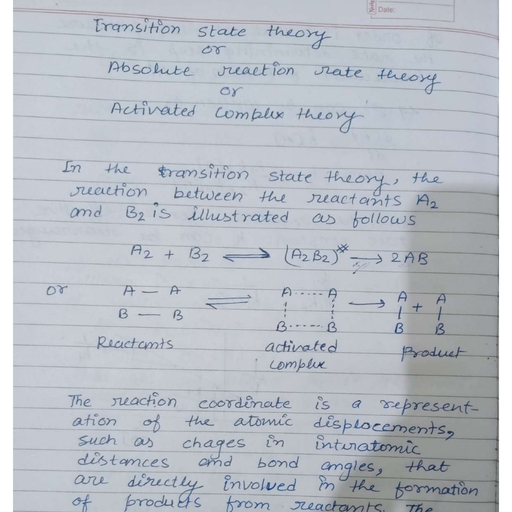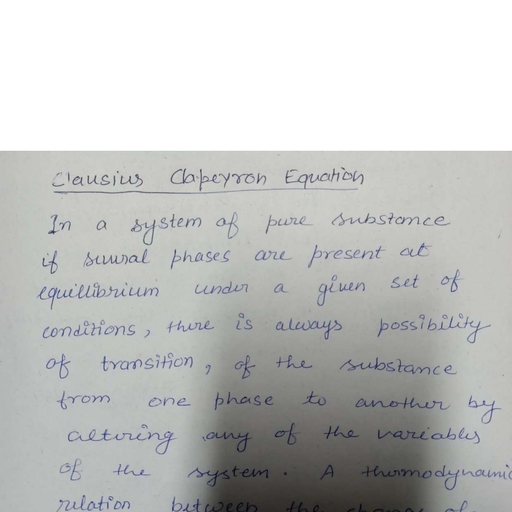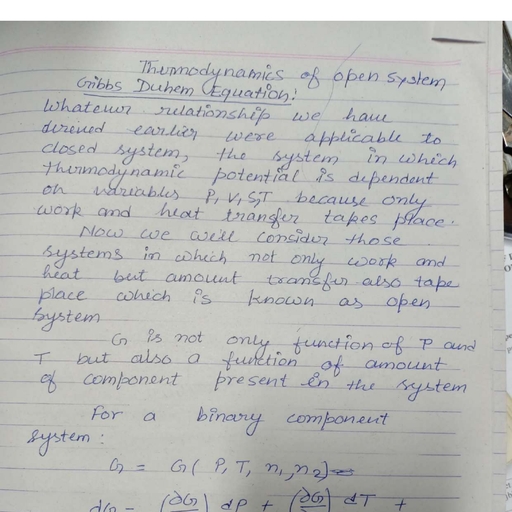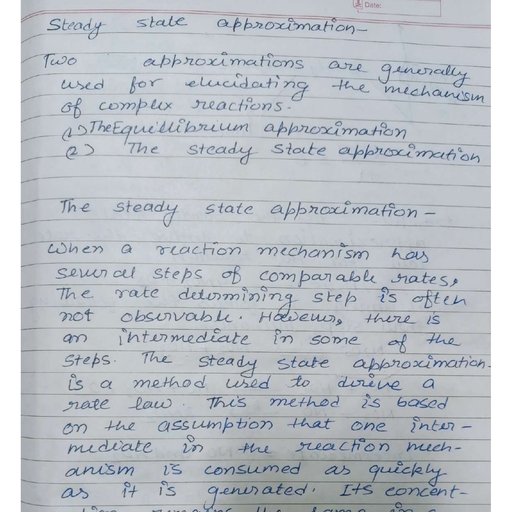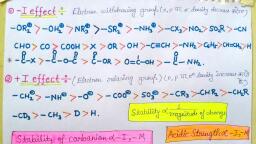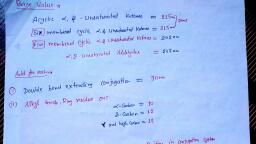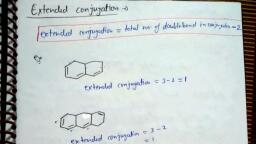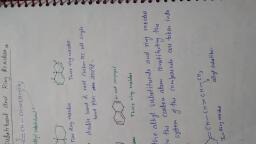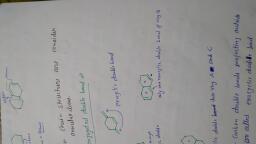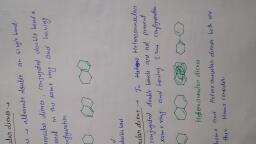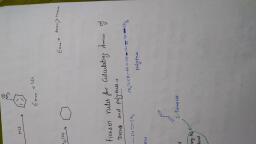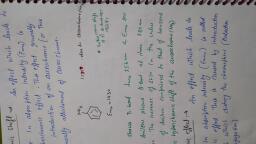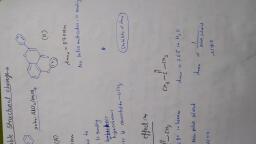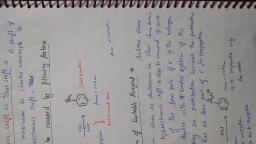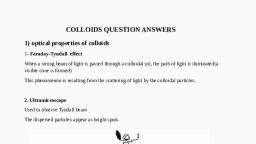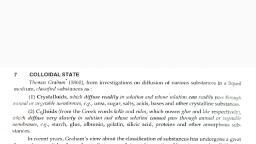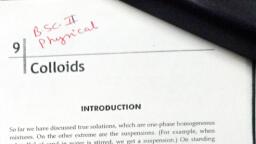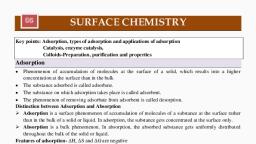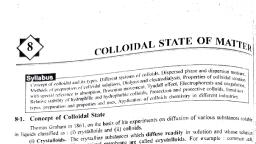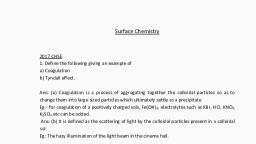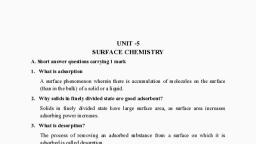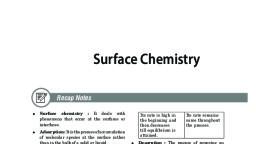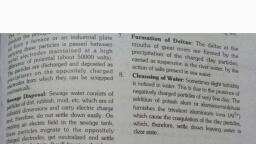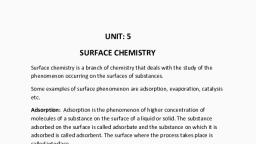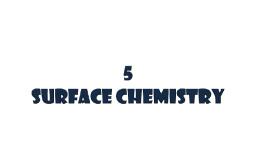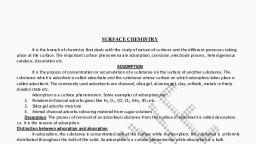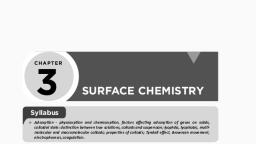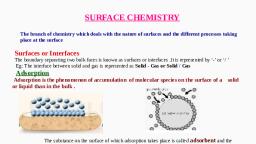Page 1 :
UV) Gauri weer, on and Properties of Colloid, d by various methods are impure and, , : The colloidal sols obtaine, ther soluble substances. These impurities may destabilise the, , Section (D) : Purificati, A very important method of removal of soluble impurities from, , Purification of Colloidal Sols :, contain impurities of electrolytes and o, , sol. Hence, they have to be removed., sols by a semipermeable membrane is known as dialysis., m a colloidal solution by means, , It is a process of removing a dissolved substance fro, ue solution (ions or smaller molecules) can, , A. Dialysis :, diffusion through suitable membrane. Since particles in tr, llophane sheet but colloidal particle do not,, , pass through animal membrane or parchment paper or ce, , the appratus used for this purpose is called Dialyser., , A bag of suitable membrane containing the colloidal solutio, , ¢ ns is suspended in a vessel through which, fresh water continously flow. The molecules and ions (crystalloids) diffuse through membran, , e into the, , outer water & pure colloidal solution is left behind., , Distilled, water, ——>, , , , Cellophane bag, , : Fig. : An apparatus for electrodialysis., ovement of ions across the membrane can be expedited by applying electric potential through two, , electrodes as shown in fig., This method is faster than simple dialysis and is known as, , ‘Scanned with Camscanner
Page 3 :
ace Chemistry /, Electrodialysis. | fication of blood in the artificial kidney machine., , *The most important applications of dialysis is in the puri he blood is separated from, , In case of kidney failure, blood cannot be purified. Under such condition, t, dissolved toxic impurities by dialysis and re-introduced in the bloods stream., , “Dialysis is not applicable for non-electrolytes like glucose, sugar, etc. ; :, it 7 4 d by carrying out filtration through special, , B. Ultra Filtration : In this method, colloidal sols are purifie, type of graded filters called ultra-filters. These filter papers allow only the electrolytes to pass through., , These filter papers are made of particular pore size by impregnating with colloidal solution and, subsequently hardened by soaking in formaldehyde collodion. In order to accelerate the filtration, , through such filter papers, increased pressure or suction is employed., , es - <n a
Page 4 :
.” PROPERTIES OF COLLOIDAL SOLUTIONS, , General Properties, , A colloidal solution is a two-phase heterogeneous system. The colloidal, particles are aggregates of simple molecules and their molecular weights, are high. The observed osmotic pressure of a colloidal solution is lower, than the calculated one., , The colloidal particles behave like the particles of a gas. Robert Brown, observed the nonstop zigzag motion of colloidal particles and this was named, Brownian movement. The Brownian movement is due to the bombardment, of colloidal particles by the molecules of the solvent (dispersion medium), which are in constant motion just like the molecules in a gas. Thus Brownian, movement gives a direct proof of the random kinetic motion of molecules, in a liquid.
Page 5 :
ONITACE Cheney 7 LS, e Optical Properties-Tyndall effect : Tyndall, in 1869, observed that if a strong beam of light is, passed through a colloidal sol placed in a dark place, the path of the beam gets illuminated. This, phenomenon is called Tyndall effect, which is due to the scattering of light by the colloidal particles. The, illuminated path of beam is called Tyndall cone. This phenomenon is due to scattering of light from the, , surface of colloidal particles. In a true solution there are no particles of sufficiently large diameter to, scatter light & hence the beam is invisible., , Eye Ses, , re, , Tyndall cone, , , , , , , , <Q), , Light source, , , , , , , , , , , , , , Scattered light, , , , , , True solution Colloidal solution, “The intensity of scattered light depends on the difference between the refractive indice of the D.P and, , D.M., In lyophobic colloids, this difference is appreciable and therefore the tyndal effect is quite well, defined but in lyophilic sols the difference is very small and the tyndal effect is very weak. Thus in sols, of silicic acid, blood serum, albumin, etc. there is little or no tyndal effect., , Example of Tyndall Effect, , > Blue colour of sky and sea water., > Visibility of tail of comets., zs, , Light thrown from a projector in cinema hall., Appearance of dust particle in a semi darked room., ® Application of Tyndall Effect :, , (i) In making ultramicroscopes., , (ii) In finding heterogenity of solution., , yy, , ‘Scanned with Camscanner

